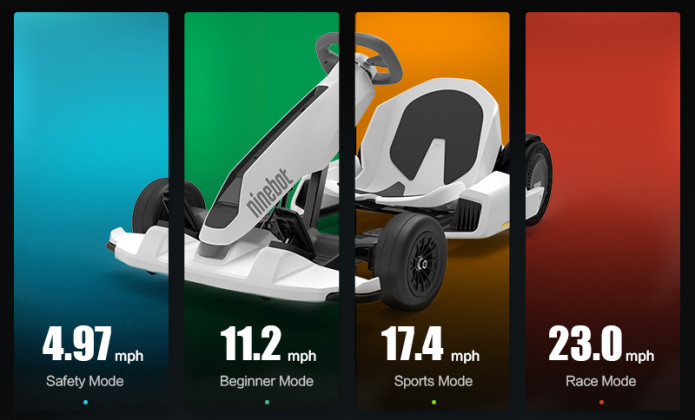
Segway-Ninebot has just opened orders in North America for a new version of the company’s self-balancing electric scooter, the Ninebot S Max.
Unlike conventional electric scooters of the Bird and Lime variety, the Ninebot S Max uses the hoverboard-style parallel wheel design.
The previous version of the scooter offered by Ninebot included a center pillar that reached just short of the rider’s knees. Riders pressed against the pillar with their legs to control steering.
The new Ninebot S Max can be operated in this way, but it also includes an extendable pillar that sports a steering wheel. The steering wheel doesn’t actually turn, but appears to be leaned left and right like a control column or yoke.
The new design is likely to improve comfort and stability by allowing riders to also hold on with their hands.
The steering wheel also includes a built-in display that allows riders to monitor the device’s speed in real time.

Functionally, the Ninebot S Max looks more akin to the classic Segway self-balancing transporter – a vehicle that the company finally killed off last year.
But at the current sale price of $849, the new Ninebot S Max is considerably less expensive than the old-school $4,000+ Segway.
The Ninebot S Max isn’t only cheaper than the previous Segway i2, it’s also lighter and more powerful. The device weighs 22.7 kg (50.2 lb) and sports a pair of 2,400W peak motors. The power isn’t used to achieve a high top speed, as the device only maxes out at 20 km/h (12.4 mph).
Instead, that power is needed to make quick fore and aft corrections to maintain balance, and also provides impressive incline climbing abilities for a self-balancing scooter.
A 432 Wh battery provides a range of 38 km (23.6 mi).

Riders can use the device hands-free by removing the steering wheel attachment and instead using their knees to control the steering like in previous models.
The Ninebot S Max can also be incorporated into Ninebot’s popular go-kart attachment, turning the combo into a 4.8 kW go-kart and unlocking a higher 37 km/h (23 mph) top speed, though the range drops to 25 km (15.5 miles).
Segway-Ninebot has previously offered the Ninebot Gokart PRO for around $1,999, but users can add the Ninebot S Max to the company’s Gokart kit and achieve the same performance for a total of $1,698.
For anyone rocking the Gokart kit with the old Ninebot S self-balancing scooter, the new model debuting today can be swapped in easily and offers a nice performance boost.

Segway-Ninebot is now taking pre-orders on Indiegogo at the $849 sale price and expects to begin delivery in April.
Indiegogo has become a common platform for launching new personal electric vehicles, and Segway-Ninebot has used the platform several times over the last few years for everything from electric dirt bikes to electric mopeds.
Subscribe to Electrek on YouTube for exclusive videos and subscribe to the podcast.
Author: Micah Toll
Source: Electrek



